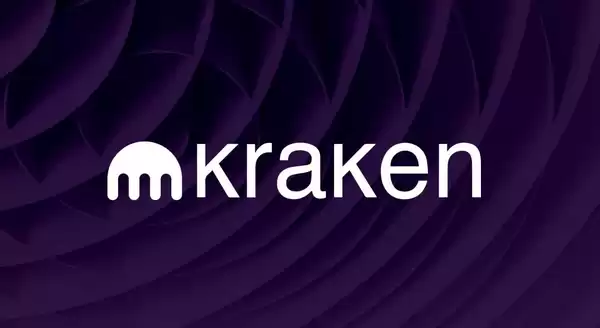-
 Bitcoin
Bitcoin $118600
0.36% -
 Ethereum
Ethereum $3855
1.06% -
 XRP
XRP $3.195
-0.09% -
 Tether USDt
Tether USDt $1.000
-0.04% -
 BNB
BNB $844.5
6.23% -
 Solana
Solana $191.3
2.83% -
 USDC
USDC $0.9997
-0.01% -
 Dogecoin
Dogecoin $0.2376
0.10% -
 TRON
TRON $0.3242
0.83% -
 Cardano
Cardano $0.8222
0.13% -
 Hyperliquid
Hyperliquid $45.26
6.53% -
 Sui
Sui $4.200
-2.56% -
 Stellar
Stellar $0.4336
-1.24% -
 Chainlink
Chainlink $18.86
0.28% -
 Hedera
Hedera $0.2796
-1.75% -
 Bitcoin Cash
Bitcoin Cash $583.3
-1.84% -
 Avalanche
Avalanche $27.06
8.09% -
 Litecoin
Litecoin $112.3
-1.16% -
 Toncoin
Toncoin $3.353
0.58% -
 UNUS SED LEO
UNUS SED LEO $8.968
-0.11% -
 Shiba Inu
Shiba Inu $0.00001395
-0.54% -
 Ethena USDe
Ethena USDe $1.001
-0.03% -
 Uniswap
Uniswap $10.76
0.69% -
 Polkadot
Polkadot $4.175
0.26% -
 Monero
Monero $326.7
1.07% -
 Bitget Token
Bitget Token $4.665
1.61% -
 Dai
Dai $0.9998
-0.02% -
 Pepe
Pepe $0.00001271
0.32% -
 Cronos
Cronos $0.1416
2.01% -
 Aave
Aave $299.3
1.15%
How to increase leverage in Kraken
Traders can amplify potential profits and short-sell assets by increasing leverage on Kraken, but they must carefully manage risks to mitigate potential losses and liquidation.
Nov 12, 2024 at 08:04 pm

How to Increase Leverage in Kraken
Kraken, one of the leading cryptocurrency exchanges, offers leveraged trading for a variety of digital assets. By utilizing leverage, traders can amplify their potential profits (and losses) by trading with more capital than they initially have. This guide will provide a comprehensive overview of the steps involved in increasing leverage on Kraken, including a detailed explanation of the risks and benefits associated with leveraged trading.
Understanding Leverage
Leverage refers to the practice of borrowing funds to increase the size of a trade. For example, a trader with $100 in their account could use 5x leverage to trade with $500 worth of assets. This would allow them to enter a larger position than they would be able to with their own capital.
Benefits of Leveraged Trading
- Increased potential profits: By amplifying the amount of capital available for trading, leverage can significantly increase potential profits.
- Short-selling opportunities: Leverage enables traders to short-sell assets, which means they can profit from price declines.
- Margin calls: Leverage can help traders avoid margin calls by providing a buffer against unfavorable price movements.
Risks of Leveraged Trading
- Increased potential losses: The downside of leverage is that it can also amplify potential losses. If the market moves against the trader's position, they could lose more money than they initially invested.
- Liquidation: If the trader's losses exceed their collateral, their position may be liquidated and they could lose their entire investment.
- Emotional trading: Leverage can lead to emotional trading decisions, as traders may be more likely to take excessive risks.
Steps to Increase Leverage in Kraken
1. Enable Leveraged Trading
Before you can increase leverage, you must first enable leveraged trading on your Kraken account. To do this:
- Navigate to the "Settings" tab in your Kraken dashboard.
- Click on the "Security" sub-tab.
- Scroll down to the "Leverage Trading" section.
- Enable leveraged trading and enter a 2FA code to confirm.
2. Set Leverage Level
Once leveraged trading is enabled, you can set your desired leverage level. To do this:
- Navigate to the "Trade" tab in your Kraken dashboard.
- Select the asset pair you want to trade.
- Click on the "Margin" tab.
- Enter your desired leverage level in the "Leverage" field.
- Click on the "Open Position" button to execute the trade.
3. Manage Risk
When trading with leverage, it is crucial to manage your risk carefully. Here are some best practices:
- Set stop-loss orders: Stop-loss orders automatically close your position if the market moves against you, limiting your potential losses.
- Use take-profit orders: Take-profit orders automatically close your position when it reaches a specified profit target, locking in your gains.
- Monitor your positions regularly: Regularly monitor your open positions and adjust your leverage or exit the trade if necessary.
Disclaimer:info@kdj.com
The information provided is not trading advice. kdj.com does not assume any responsibility for any investments made based on the information provided in this article. Cryptocurrencies are highly volatile and it is highly recommended that you invest with caution after thorough research!
If you believe that the content used on this website infringes your copyright, please contact us immediately (info@kdj.com) and we will delete it promptly.
- Pepe Dollar vs. Bitcoin HYPER: The Crypto Supercycle Meme Showdown
- 2025-07-29 01:10:12
- BlockDAG, BNB, DOGE: The New York Minute on 2025's Crypto Frontrunners
- 2025-07-29 01:50:12
- AVAX, Solana, and the AI Token Surge: What's Hot and What's Not
- 2025-07-29 01:50:12
- XRP Price Surge Potential: Chart Analysis and What's Next
- 2025-07-29 01:55:48
- Crypto Investments, Dogecoin Substitutes, and Wealthy Returns: Navigating the Meme Coin Mania and Beyond
- 2025-07-29 00:30:13
- Iron Age Treasures: Coins and Brooches in the Test Valley
- 2025-07-29 01:55:48
Related knowledge

Why is my Bitstamp futures position being liquidated?
Jul 23,2025 at 11:08am
Understanding Futures Liquidation on BitstampFutures trading on Bitstamp involves borrowing funds to open leveraged positions, which amplifies both po...

Does Bitstamp offer inverse contracts?
Jul 23,2025 at 01:28pm
Understanding Inverse Contracts in Cryptocurrency TradingIn the realm of cryptocurrency derivatives, inverse contracts are a specific type of futures ...

What is the difference between futures and perpetuals on Bitstamp?
Jul 27,2025 at 05:08am
Understanding Futures Contracts on BitstampFutures contracts on Bitstamp are financial derivatives that allow traders to speculate on the future price...

How to find your Bitstamp futures trade history?
Jul 23,2025 at 08:07am
Understanding Bitstamp and Futures Trading AvailabilityAs of the current state of Bitstamp’s service offerings, it is critical to clarify that Bitstam...

Can I use a trailing stop on Bitstamp futures?
Jul 23,2025 at 01:42pm
Understanding Trailing Stops in Cryptocurrency TradingA trailing stop is a dynamic type of stop-loss order that adjusts automatically as the price of ...

Can I use a trailing stop on Bitstamp futures?
Jul 25,2025 at 02:28am
Understanding Trailing Stops in Cryptocurrency Futures TradingA trailing stop is a dynamic type of stop-loss order that adjusts automatically as the m...

Why is my Bitstamp futures position being liquidated?
Jul 23,2025 at 11:08am
Understanding Futures Liquidation on BitstampFutures trading on Bitstamp involves borrowing funds to open leveraged positions, which amplifies both po...

Does Bitstamp offer inverse contracts?
Jul 23,2025 at 01:28pm
Understanding Inverse Contracts in Cryptocurrency TradingIn the realm of cryptocurrency derivatives, inverse contracts are a specific type of futures ...

What is the difference between futures and perpetuals on Bitstamp?
Jul 27,2025 at 05:08am
Understanding Futures Contracts on BitstampFutures contracts on Bitstamp are financial derivatives that allow traders to speculate on the future price...

How to find your Bitstamp futures trade history?
Jul 23,2025 at 08:07am
Understanding Bitstamp and Futures Trading AvailabilityAs of the current state of Bitstamp’s service offerings, it is critical to clarify that Bitstam...

Can I use a trailing stop on Bitstamp futures?
Jul 23,2025 at 01:42pm
Understanding Trailing Stops in Cryptocurrency TradingA trailing stop is a dynamic type of stop-loss order that adjusts automatically as the price of ...

Can I use a trailing stop on Bitstamp futures?
Jul 25,2025 at 02:28am
Understanding Trailing Stops in Cryptocurrency Futures TradingA trailing stop is a dynamic type of stop-loss order that adjusts automatically as the m...
See all articles

























































































